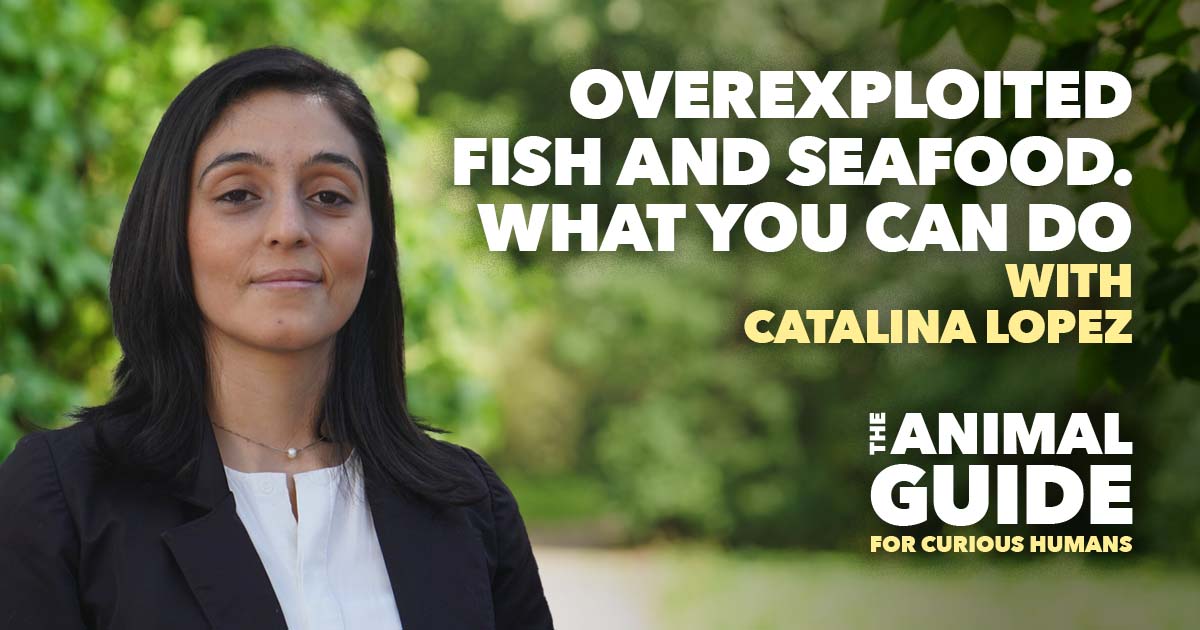In this episode of The Animal Guide we explore the systems used to put aquatic life on our plates, and how we can improve the lives of aquatic animals.
Our guest is Catalina Lopez from the Aquatic Life Institute. She is the Director of the Aquatic Animal Alliance (AAA), a coalition of organizations working around the globe to reduce the suffering of aquatic animals used for food.
A vet from Columbia who now lives in Mexico, Catalina has worked in the farmed animal protection movement for almost five years, previously leading the Corporate Engagement team at Mercy For Animals Latin America on their work in cage-free campaigns. More than 100 companies committed to going cage-free in Mexico during that time.
Catalina shares with host Maureen Armstrong the animal welfare standards created by the AAA that they are actively encouraging countries and companies around the world to adopt. This includes the AAA’s key aquatic welfare recommendations.
Exploitation of aquatic life has more than doubled in 40 years
Aquatic life is in dire need of protection! Catalina explains that globally, the share of fish populations that are overexploited (i.e. they are caught faster than they can reproduce to sustain their population levels) has more than doubled since the 1980s. This means the current levels of wild fish catch are unsustainable. As a result, aquaculture, which is the practice of fish and seafood farming, increased to make up for the decrease in that supply.
To put this in perspective, from the 1960s to 2015, fish farming has increased 50 fold to around 100 million tons per year. And in terms of number of animals, this is around 73 to 180 billion farmed fish and around 400 billion shrimp. Notably, vessels that are registered to wealthy countries are responsible for more than 70 percent of industrial fishing.
The Blue Loss Report
The episode also explores the issue known as the “blue loss,” which is the term used to describe how many aquatic animals are unaccounted for in the human food chain each year. Aquaculture is often touted as the solution to overfishing, yet the Blue Loss Report from the AAA has found that up to half of all animals caught at sea are fed to carnivorous fish on farms, especially salmon and tuna. This poses serious questions about aquaculture’s animal welfare paradigm.
Catalina details what needs to be done to improve aquatic animal welfare, including the psychological welfare of aquatic life.
Catalina points out that because aquatic animals are discussed as commodities, humans forget that they are live animals with certain needs and certain behaviors that we need to understand.
Episode Links and resources:
Show links:


It’s Colombia not Columbia.
Great podcast she is awesome and so knowledgeable. Very very interesting topic!!! Loved it 😊
Thanks so much Jojo. Thank you for supporting the show.